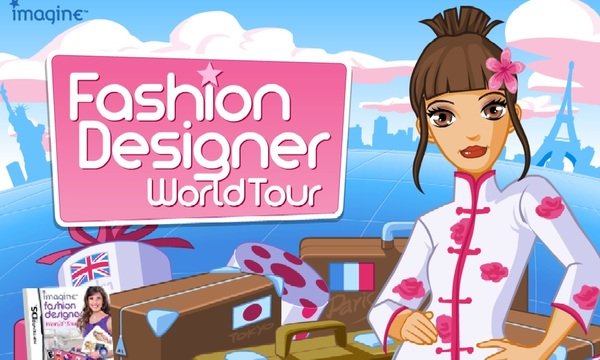Virtual fashion shows have become a groundbreaking way to showcase style, creativity, and innovation. With the rise of technology, hosting a virtual fashion show has never been easier or more exciting. Whether you’re a designer, brand, or fashion enthusiast, this guide will walk you through every step of hosting a virtual fashion show, complete with interactive games, Kizi integrations, and collaborations with magazines. Plus, we’ll explore how to draw inspiration from iconic themes like Hunger Games Capitol fashion to make your event unforgettable.
Introduction to Virtual Fashion Shows
What is a Virtual Fashion Show?
A virtual fashion show is an online event where designers and brands showcase their latest collections through digital platforms. Unlike traditional runway shows, virtual fashion shows leverage technology to reach a global audience, offering flexibility and creativity in presentation.
Why Host a Virtual Fashion Show?
Virtual fashion shows are cost-effective, accessible, and environmentally friendly. They allow designers to connect with a broader audience, experiment with innovative formats, and create immersive experiences that go beyond the physical runway.
The Role of Technology in Modern Fashion Events
From augmented reality (AR) to live streaming, technology has transformed how fashion is presented. Virtual fashion shows are no longer just an alternative—they’re a trendsetting medium that blends fashion, gaming, and digital interaction.
Planning Your Virtual Fashion Show
Setting Clear Goals and Objectives
Before diving into the details, define what you want to achieve. Are you launching a new collection, building brand awareness, or raising funds for a cause? Clear goals will guide every decision, from the platform you choose to the games you incorporate.
Defining Your Target Audience
Who are you designing for? Understanding your audience’s preferences will help you tailor the event to their tastes. For instance, if your audience loves bold, avant-garde styles, consider drawing inspiration from Hunger Games Capitol fashion with its extravagant and theatrical designs.
Choosing the Right Theme for Your Fashion Show
A strong theme ties the event together. Whether it’s futuristic, eco-friendly, or inspired by pop culture, your theme will influence everything from the outfits to the games and decor.
Selecting the Perfect Platform
Popular Platforms for Hosting Virtual Events
Platforms like Zoom, Instagram Live, and YouTube are popular choices for virtual fashion shows. Each offers unique features, such as live chat, screen sharing, and audience interaction.
Comparing Features: Zoom, Instagram Live, and Custom Solutions
Zoom is ideal for interactive events with smaller audiences, while Instagram Live is perfect for reaching a broader, more casual audience. For a fully customized experience, consider working with a tech team to create a dedicated platform.
Ensuring a Seamless User Experience
Test your platform thoroughly before the event. Ensure it’s easy to navigate, supports high-quality video streaming, and offers features like live polls or Q&A to keep the audience engaged.
Incorporating Fashion Show Games
Why Add Games to Your Virtual Fashion Show?
Games add an element of fun and interaction, making your event more memorable. They can also help break the ice and keep the audience engaged between segments.
Top Fashion-Themed Games to Engage Your Audience
Consider trivia games about fashion history, virtual scavenger hunts for hidden outfit details, or even a “design your own outfit” challenge. For a Hunger Games Capitol fashion twist, host a competition where attendees vote for the most extravagant virtual outfit.
How to Integrate Games into the Event Flow
Plan games at strategic intervals, such as during transitions between collections or as a mid-show break. Use interactive tools like live polls or chat features to involve the audience.
Leveraging Kizi for Interactive Fun
What is Kizi?
Kizi is a popular online gaming platform that offers a wide range of fun, interactive games. Its user-friendly interface and engaging content make it a great addition to virtual fashion shows.
Best Kizi Games for Fashion Shows
Choose games that align with your theme. For example, dress-up games or fashion design challenges can complement a Hunger Games Capitol fashion-inspired event.
Tips for Using Kizi to Boost Engagement
Embed Kizi games directly into your event platform or share links for attendees to play during breaks. Offer prizes for high scores to encourage participation.
Collaborating with Fashion Magazines
Partnering with Magazines for Promotion
Magazines can help amplify your event’s reach. Collaborate with them for pre-event coverage, exclusive interviews, or behind-the-scenes content.
How Magazines Can Enhance Your Event’s Credibility
A feature in a reputable magazine adds prestige to your event. It also provides valuable exposure to their readership, which often includes fashion influencers and industry professionals.
Examples of Successful Magazine Collaborations
Look to events like Met Gala or Paris Fashion Week, where magazines like Vogue and Harper’s Bazaar play a key role in promotion and coverage.
Designing the Virtual Runway
Creating a Visually Stunning Backdrop
Your virtual runway is the centerpiece of the show. Use digital tools to create dynamic backdrops that reflect your theme, whether it’s a futuristic cityscape or a glamorous ballroom inspired by Hunger Games Capitol fashion.
Using Augmented Reality (AR) for a Unique Experience
AR can bring your designs to life, allowing viewers to see outfits in 3D or even “try them on” virtually.
Tips for Lighting and Camera Setup
Good lighting and camera angles are crucial for showcasing details. Use soft, diffused lighting to highlight textures and colors, and ensure your camera is stable and positioned at the right height.
Curating the Fashion Lineup
Selecting Designers and Brands to Feature
Choose designers whose work aligns with your theme and audience. For a Hunger Games Capitol fashion-inspired show, look for bold, theatrical designs.
Organizing the Order of Outfits
Plan the lineup to create a narrative or emotional arc. Start with simpler designs and build up to the most dramatic pieces.
Balancing Diversity and Cohesion in the Collection
Ensure a mix of styles, colors, and silhouettes while maintaining a cohesive overall look.
Engaging Your Audience
Interactive Features to Keep Viewers Hooked
Use live chats, polls, and Q&A sessions to involve the audience. Encourage them to share their thoughts on social media using a dedicated hashtag.
Using Live Polls and Q&A Sessions
Live polls can help you gauge audience preferences, while Q&A sessions allow designers to connect directly with viewers.
Encouraging Social Media Participation
Create shareable moments, like a dramatic finale outfit inspired by Hunger Games Capitol fashion, to generate buzz online.
Promoting Your Virtual Fashion Show
Building Hype with Teasers and Trailers
Release short clips or sneak peeks of the collection to build anticipation.
Utilizing Social Media Platforms for Maximum Reach
Promote your event on Instagram, TikTok, and Twitter. Use eye-catching visuals and engaging captions to attract attention.
Collaborating with Influencers and Bloggers
Partner with influencers to spread the word and attract their followers to your event.
Technical Preparation
Testing Your Equipment and Internet Connection
Ensure your camera, microphone, and internet connection are reliable. Conduct a dress rehearsal to iron out any technical issues.
Preparing for Technical Glitches
Have a backup plan in case of technical difficulties, such as pre-recorded segments or a secondary streaming platform.
Ensuring Accessibility for All Viewers
Provide captions, translations, and options for viewers with disabilities to ensure inclusivity.
Hosting the Event
Welcoming Your Audience and Setting the Tone
Start with a warm welcome and an overview of what to expect. Set the tone with music, visuals, and a confident host.
Managing the Flow of the Show
Keep the event on schedule and smoothly transition between segments.
Keeping the Energy High Throughout the Event
Use engaging commentary, interactive elements, and surprises to maintain excitement.
Post-Event Activities
Sharing Highlights and Recordings
Upload the show to your website or social media for those who missed it.
Collecting Feedback from Attendees
Use surveys or social media polls to gather feedback and improve future events.
Analyzing Metrics to Measure Success
Track metrics like attendance, engagement, and social media mentions to evaluate the event’s impact.
Monetizing Your Virtual Fashion Show
Selling Tickets or Offering Paid Access
Charge for exclusive access or offer a free event with optional paid upgrades.
Partnering with Sponsors and Advertisers
Collaborate with brands to sponsor your event in exchange for promotion.
Creating Merchandise for Additional Revenue
Sell virtual or physical merchandise, such as digital outfits or branded accessories.
Case Studies of Successful Virtual Fashion Shows
Examples from Top Brands and Designers
Look to brands like Gucci and Balenciaga, which have successfully hosted virtual shows.
Lessons Learned from Past Events
Learn from their successes and mistakes to refine your own event.
How to Adapt Their Strategies for Your Show
Incorporate their best practices while adding your unique touch.
Future Trends in Virtual Fashion Shows
The Growing Role of Virtual Reality (VR)
VR is set to revolutionize virtual fashion shows, offering even more immersive experiences.
How AI is Shaping the Future of Fashion Events
AI can personalize the viewer experience, from recommending outfits to creating virtual avatars.
Predictions for the Next Decade
Expect virtual fashion shows to become more interactive, accessible, and integrated with gaming and social media.
Final Thought
Hosting a virtual fashion show is an exciting opportunity to showcase your creativity and connect with a global audience. By incorporating games, Kizi, and magazine collaborations, you can create an unforgettable experience. Drawing inspiration from themes like Hunger Games Capitol fashion adds a unique flair that sets your event apart. With careful planning and execution, your virtual fashion show can be a resounding success.
Additional Resources
Tools and Software for Hosting Virtual Events
Explore platforms like Zoom, OBS Studio, and Canva for event planning and execution.
Recommended Reading on Fashion and Technology
Check out books and articles on the intersection of fashion and digital innovation.
Links to Popular Kizi Games and Fashion Magazines
Visit Kizi’s website for fun games and browse magazines like Vogue and Elle for inspiration.
By following this guide, you’ll be well-equipped to host a virtual fashion show that’s as stylish as it is engaging. Happy planning!


